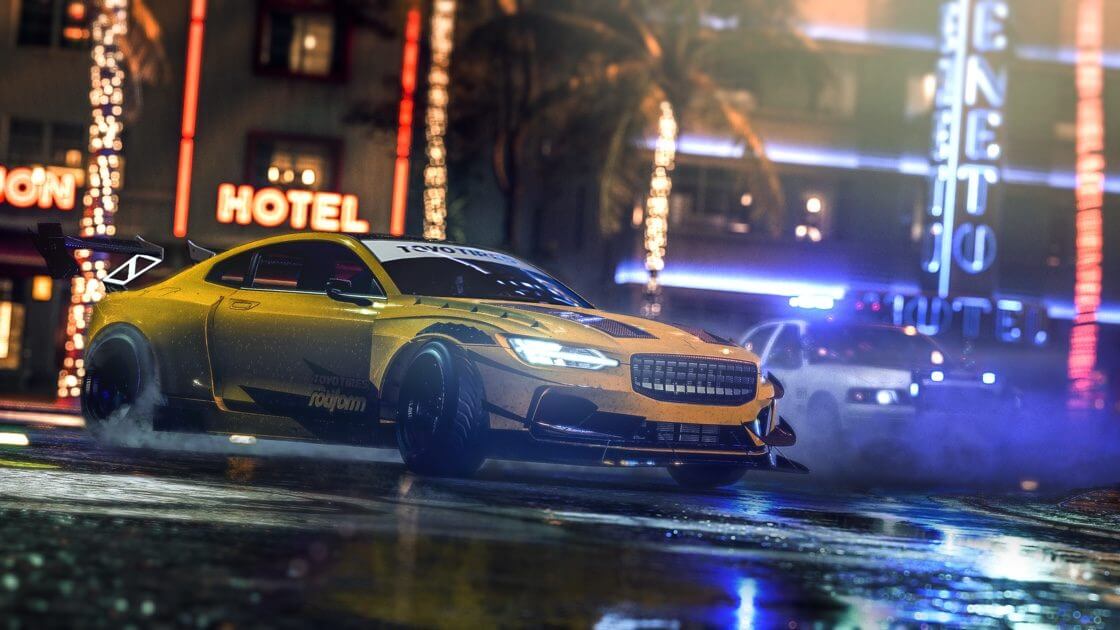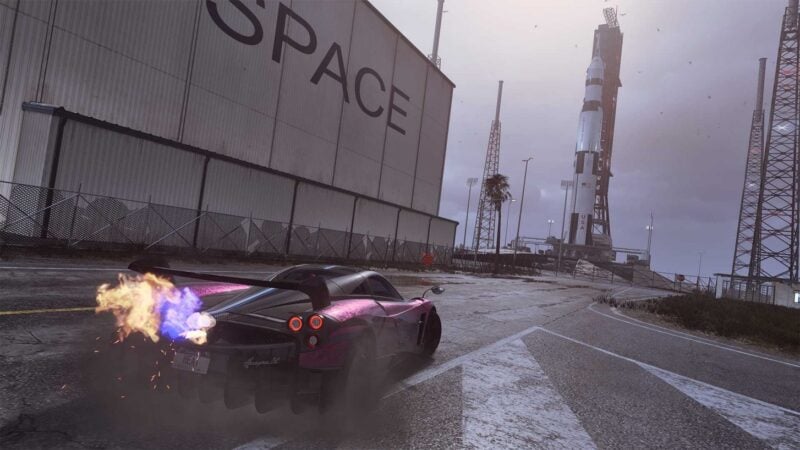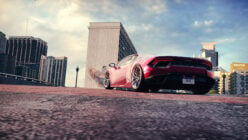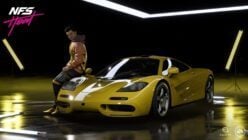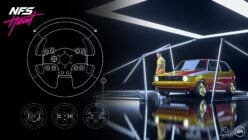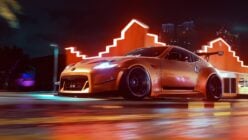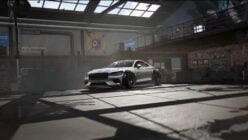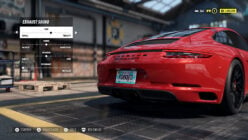A quarter of a century. That’s how long Need for Speed has been part of the gaming landscape. In fact the original game — The Need for Speed — predates the PlayStation itself by three months, and initially launched on the 3DO console. If you remember that, you’re showing your age.
Looking back down a 25-year tunnel, not much has really changed. While some of the intervening 22 games have varied from the theme, the Need for Speed series has always been about racing the fastest cars out there on the public roads of its fictional universe. With increasingly outrageous car customization and implausible plot lines centered on kind-hearted, family-oriented outlaws, it’s inspired car culture as much as it has taken inspiration from it.
Recent installments have perhaps missed a mark. That may be due to some of the monetization strategies, design decisions, or just because it’s cool to hate on Need for Speed — 150 million copies sold makes for a big target. Whatever the reason, each new Need for Speed game faces a lot of pressure. With Need for Speed Heat now on the shelves, we’ve been putting it through its paces.
GTPlanet has been playing the PlayStation 4 version of Need for Speed Heat, on a regular PS4 console, as released on November 8.
Content and Value For Money
Heat’s car list isn’t huge, coming in at around 130 cars, but it’s almost double what its predecessor launched with and hits all the bases you’d expect it to. Those of us old enough to remember playing the early NFS titles will recall racing a fast Mercedes, BMW, Ferrari, Chevrolet, Lamborghini, and Porsche, and they’re not only covered but make up the bulk of the car list.
There’s plenty to occupy the serious speed fiend, with McLaren, Pagani, and Koenigsegg all making appearances. You won’t find any out-and-out race cars — it’s Need for Speed — but there’s things like the McLaren P1 GTR and Aston Martin Vulcan which are as close as you can get. Of course the extensive livery editor can make anything look like a race car, and you’d only have to fit the relevant components to get there.
Each of the cars has plenty of parts too, divided into road, race, drift, and off-road — sometimes with a mix of two more complementary functions, like Rallycross (off-road and race). The tuning shop displays how these affect your car on a two-axis graph: go too heavily to the race end and your car won’t drift; make it too road-oriented and it’ll struggle if you leave asphalt, even slowing down on shortcuts.
If you’ve come from Payback to Heat, then there’s some good news. All of these parts and customization options are free of charge. You simply need to work your way through the game to unlock them, and earn enough in-game “Bank” to buy them. Aside from a couple of pre-order bonus cars, everything that’s on the disc is accessible in the game so long as your level is high enough. That’s worth several points more in value than its predecessor.
The map for Heat is no bigger than Payback’s, at broadly the same size as Forza Horizon 4’s, but there’s more road length in there. That in part comes down to the usual tropes of racing game locations — city, port, industrial complex, quarry (abandoned or otherwise), rural area — based on parts of Florida and Georgia rather than the fictionalized Nevada Desert around Fortune City.
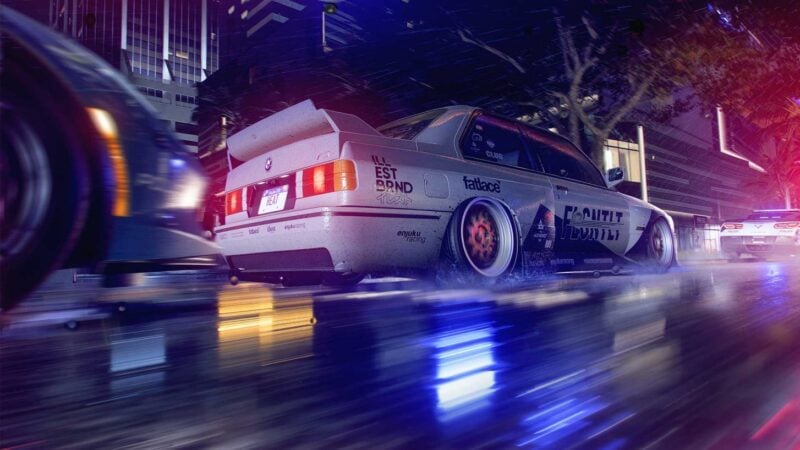
There is quite a bit to do in there too, with a number of collectables in each area. At times this feels a bit derivative. Collecting street art in back alleys, smashing random neon flamingos, and performing stunt jumps through billboards all seems a bit like Grand Theft Auto: San Andreas. The speed traps and drift routes, though more on-theme, feel like I’m back at the Horizon Festival…
Of course there’s always good old racing. Heat has an interesting day/night mechanic, whereby you can take part in sanctioned events by day to earn cold, hard cash (or ‘Bank’), but at night you race in illegal affairs to boost your kudos (or ‘Rep’). Rep is what counts towards your player level, unlocking cars and parts, while Bank is what you buy cars and parts with. Race all day and you’ll be able to buy the best slow cars you can; you need that street-cred to get better ones, or make your own favorite ride faster.
Gaining Rep is trickier. Once you’ve started even one illegal night time street race, you get a ‘Heat’ level, and that sets the cops on you. Your Heat level multiplies your Rep, so the higher it goes the better, but the more police — and the more better equipped police — hunt for you. You can only bank your Rep by escaping the police and getting back to a safehouse to end your night. Players may struggle with this at first.
Rep also helps you along the storyline, and that’s a pretty weak part of the game. Aside from making little sense — the city has an incredibly expensive anti-street racing taskforce that will wipe out innocent bystanders without a care at night, but allows organized events literally anywhere in the region during the daytime — it too is stuffed with tropes. Thankfully it’s also very, very short, with only a handful of missions, including one ‘follow without raising suspicion’ and one ‘protect the other car’. You’ll spend more time building your Rep up to unlock them, but it’ll only take a few hours to get through.

Online Features
Fresh from the lessons learned about always-online gaming, Heat swings almost too far the other way. The game does technically have a multiplayer mode, but for the large part it’s almost completely invisible.
At the top menu you can choose “play solo” or “play online”, and the difference between the two is microscopic. In essence the key difference is that in online play, other players appear on your map as you do on theirs — and pausing the game to access the map does not hold your car in limbo.
That means that you can engage in races with other players, including the game’s official races should you happen to start the same race at the same time as them; otherwise your opponents will be AI drivers as usual. You could also, in principle, find another player with a higher Heat level than you, and guide your police chase to them to allow you to escape — although they’ll likely be driving incredibly fast to effect their own escape.
The other angle to the multiplayer is the Crew. Heat automatically sets you up into a Crew along with other players who started the game at about the same time as you, or you can create your own Crew. As you progress through races you can earn Rep for your Crew and gain bonuses for your gameplay from your collective Crew level. That includes the Ferrari FXXK Evo for reaching the maximum crew level of 50.
You’ll be able to see your Crew members online, and create parties with them. However it’s not, at present, possible to create private lobbies for your own Crew races, or engage in Crew vs. Crew races. You cannot create custom races either.
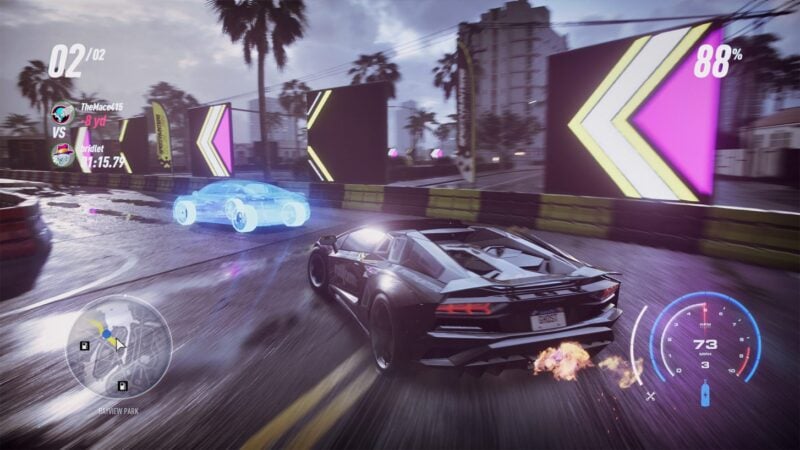
Driving Physics and Handling
If you’re after a full-on simulation game, you should be looking elsewhere. Not that this should come as news — it’s Need for Speed, and all about going fast and feeling like it.
To that end, the game does convey an incredible sense of speed, by way of physics that are for the most part wholly dumbed down. Your car — any car — will ride lumps and bumps, and ramps and jumps, with little ill effect and still drive straight and true. Dipping a wheel into the dirt has almost no effect, and most corners give you the choice of catastrophic understeer or drifting.
We’re not huge fans of the drifting mechanism in the game. As default, to drift a car you only need to turn then lift off and immediately reapply power. The back will then step out at a huge angle while you try to recover it. Despite the fact that the player can set up the car specifically for drifting, our best drift car is a pure-race focused BMW, when a race car is supposed to be the least ideal drift car… at least outside of drift events and drift zones, where it can’t drift at all.
More convincing is the road/off-road spectrum. The more you set your car up for full road use, the less able it is to travel on any form of surface other than road. This even means that if you take a shortcut between checkpoints that involves dropped two wheels into a verge, your car will slow down dramatically. If you try and take your overpowered race-prepped BMW into what turns out to be an off-road challenge (without warning) you will lose. These dirt races, with a dedicated off-road car, are particularly good fun though.
The dynamic weather appears to be for show too. We’ve found no difference in acceleration, cornering, or stopping distances in a deluge compared to a totally dry road.
Lastly, this is all using a standard game pad, as Heat does not yet support steering wheels. We’ll give it another go if that support comes along post-launch.
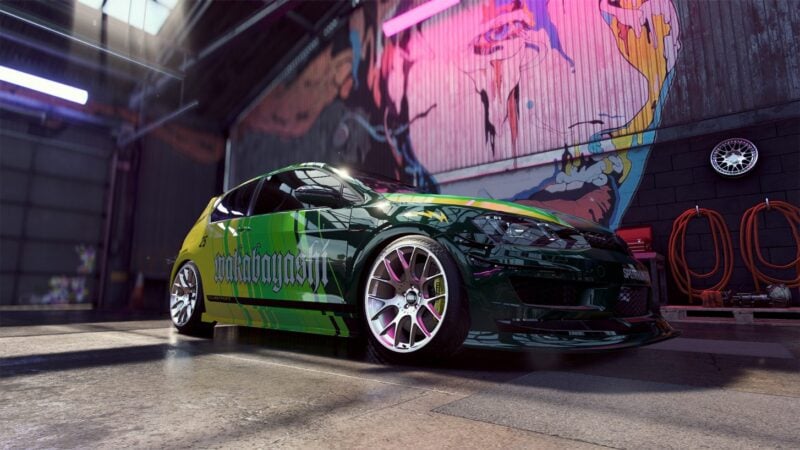
Graphics
Just like the game’s progression system, there’s a night and day difference in Heat’s graphics.
Firstly, the good stuff. Although not necessarily the highest quality vehicle models, the cars all look authentic enough and the visual upgrades are — whatever your opinion on their aesthetics — pretty impressive. Flicking through the customization options for one of your cars will tie you up for hours as you decide what type of carbon finish you want, and the precise level of window-tinting.
The night-time feel of the game is also incredibly impressive. That likely comes down to the lighting — the vibrant palette gives off a whole 1980s feel (the best decade) which suits Miami down to the ground, as any who’s played Vice City will attest. There’s some neat touches too, with reflections of your exhaust flames licking off the rear, and the headlights seem to cast individual beams.
However, there are a few issues and daytime does reveal how much the dark masks. Bearing in mind we were playing on a standard PS4 console, rather than a Pro, you can actually watch textures gradually loading with the naked eye — switch to a new car in the garage and you’ll see the game load the shapes in over a period of a couple of tenths of a second.
There’s a fair bit of pop-in too, as road surfaces and lines suddenly appear. Dawdle around and you’ll see some pretty poor bits of scenery — we waited for ages for the Parts Shop front to load in as we crept up to it. You’ll also spot how empty Palm City is; you might not see a car from one street to the next, and the game sometimes seems to get stuck on creating ambulances.
For the most part on the PS4 the game holds to 30fps, but we were able to trigger an enormous frame rate drop during one of the night races (Fury) in driving rain with a full AI field all trying to get through a muddy hairpin through destructible objects at once.
Drive as Heat intends, at speed and with motion blur, and chances are you won’t spot many flaws, and we doubt PS4 Pro and XBox One X owners will have much to complain about aside from the sterility of the daytime environment.
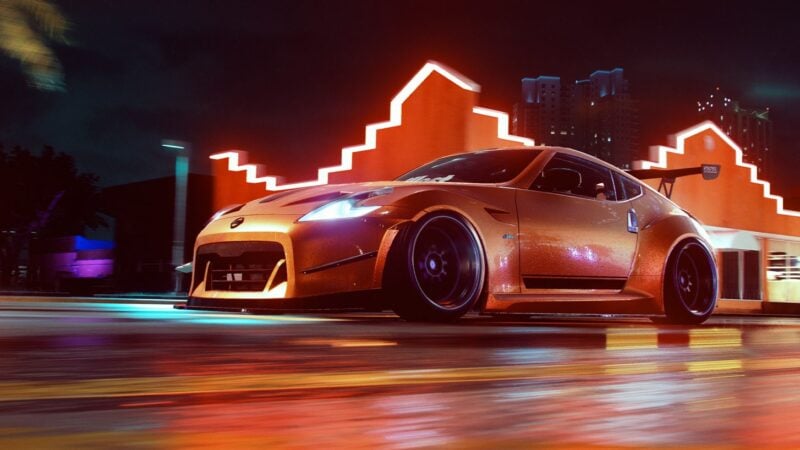
Sound Design
Without wishing to sound too old (as a Gen Xer), the game’s official soundtrack is very much not for me. That said, if you’re an aficionado of certain movies featuring kind-hearted, family-oriented outlaws (the eighth one especially), you’ll feel right at home with the musical choices. For everyone else, there’s not much choice but there’s always the music volume slider…
The cars themselves are a much stronger point for the game’s sounds. There is a certain authenticity to the vehicle sounds, perhaps turned up a little to suit the game’s character. Of those cars in Heat that we’ve driven in the real world, we’d be able to match the game car to the real one by engine note with little trouble. Swap the engine and you’ll have no difficulty hearing the configuration of the new one.
One particularly nice touch though is the exhaust tuning system. Four sliders allow you to adjust aspects of the exhaust — to make the sound more aggressive, or metallic – to suit your own personal tastes. You can’t play with it so much as to rob the innate sound of the engine, but you can unleash a different character. Or you can just smash up the overrun slider to the maximum, which is what we’re all going to do.
As massive fans of superchargers, we’re especially happy to hear the telltale whine, depending on the camera angle, of it spooling up if fitted. And of course we’re fitting it.
There’s not many environmental noises though, reflecting the fact that Palm City — aside from street racers, cops, and repeated ambulances — seems rather an empty place.
The Verdict
We don’t expect a Need for Speed game to be a racing sim set in the fast and furious world of street racing. NFS has always been that drive fast, smash stuff, don’t get nicked by the feds bit of guilty fun. It’s loud music, fast and gaudy cars, power-drifting and nitrous.
To that end, Heat hits the mark. It packs in some of the open-world feel of games like Forza Horizon with what’s made past NFS games so much fun. If anything though it takes on too much of that feel, with the inexplicable daytime ‘Showdown’ races seeming like a repackaged Horizon Festival. There’s also a little too much repetition in the race course layouts — it feels like we’ve driven the same few corners in a dozen races in each area — and the collectable street art/stunt jumps/flamingos add probably a dose too much of Grand Theft Auto.
That said, Heat does retain enough of the core of NFS, and makes several nods to its own past — long-term fans will have a wry smile at Mercer’s choice of getaway car (no spoilers). The lack of Payback’s most obvious flaws alone elevate Heat. It might be one of the most enjoyable NFS games in a good long while.
Need for Speed Heat
Learn more about how our rating system works.
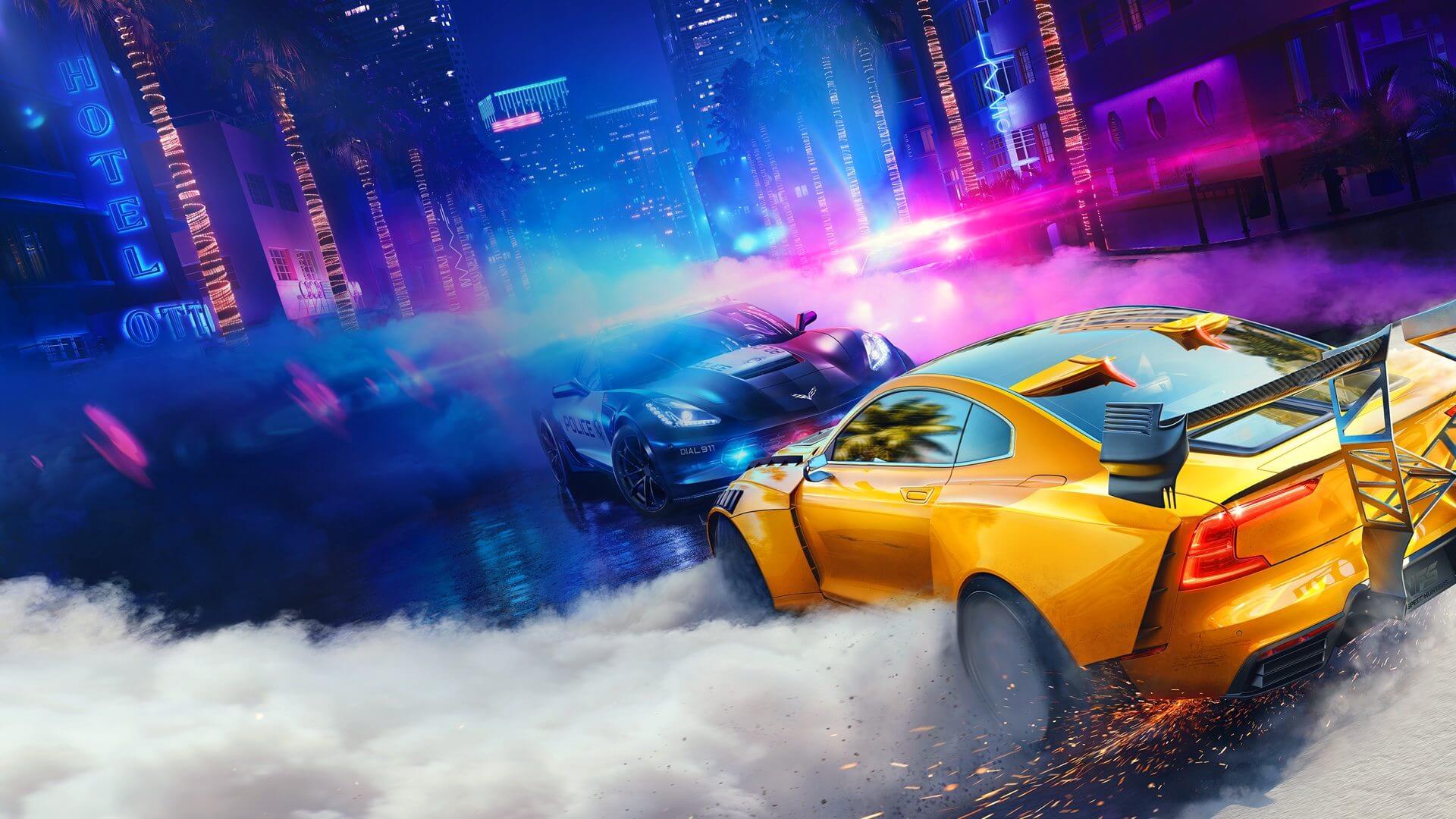
See more articles on Review.
